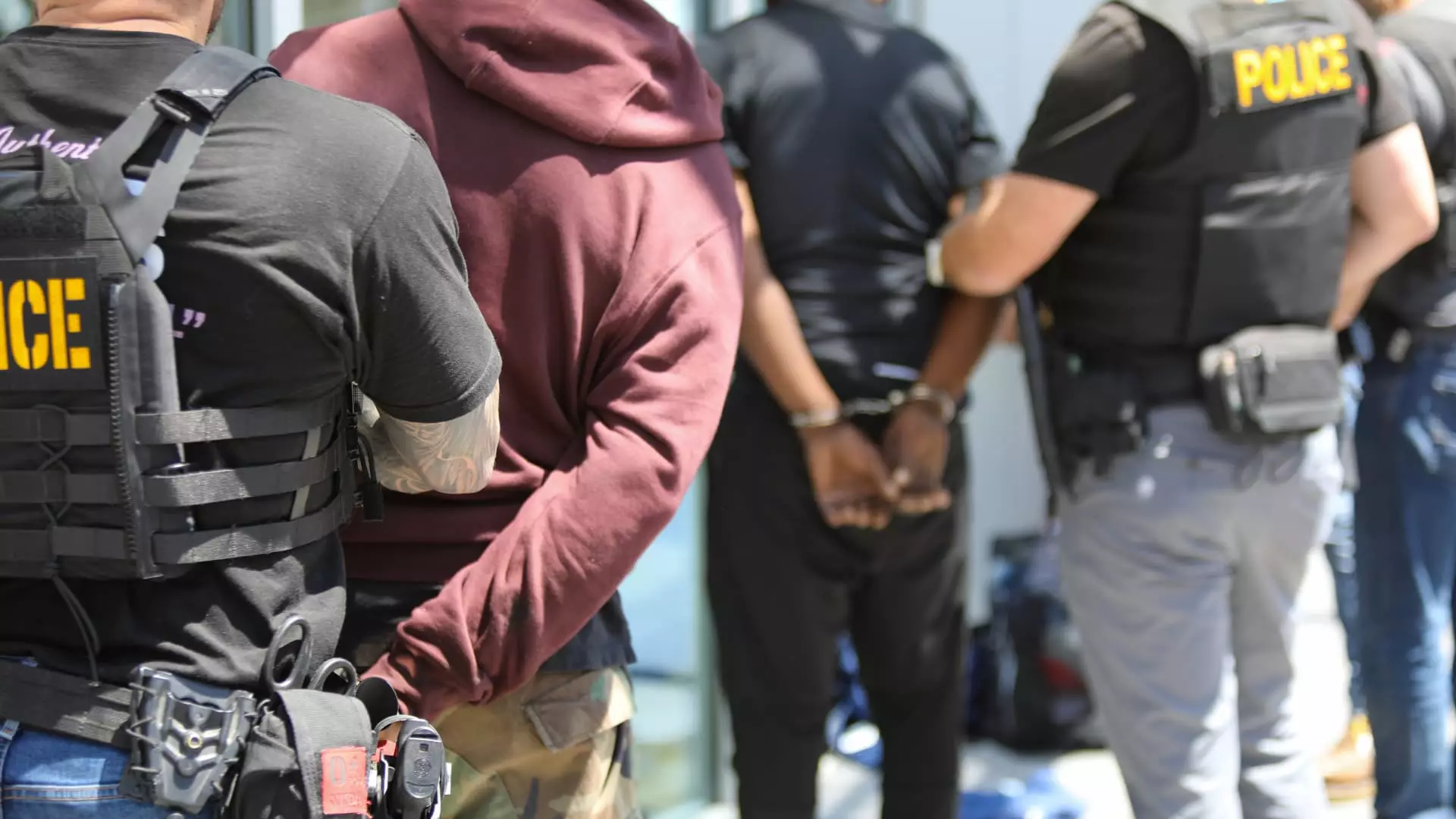In recent years, a disturbing trend has plagued retail businesses across the United States: organized retail crime (ORC). This phenomenon, characterized by coordinated groups of thieves targeting retailers and stealing large quantities of goods for resale, has grown exponentially. With reports indicating a staggering 93% rise in shoplifting incidents since 2019, this isn’t merely an economic inconvenience—it’s a crisis that deeply affects the retail industry. In response, a unique law enforcement initiative has emerged, signaling a newfound commitment to combat this escalating threat.
The Nationwide Crackdown: A Coordinated Response
Last week’s extensive crackdown, hailed as the first of its kind, showcased a monumental collaboration between law enforcement and retail stakeholders, stretching across 28 states with the participation of over 30 prominent retailers, including giants like Home Depot, Target, and Walgreens. This initiative, led by Illinois’ Cook County organized crime task force, represents a paradigm shift in how authorities are approaching retail theft: instead of treating these incidents as isolated crimes, they are now viewed through the lens of organized crime syndicates that require sophisticated, collective action to dismantle.
Cook County Sheriff Tom Dart’s assertion that focusing attention on ORC will reverberate through the criminal landscape embodies a critical realization about deterrence. For too long, many jurisdictions remained complacent or imposed light penalties, fostering an environment where the risk of apprehension seemed disproportionately low compared to the potential rewards of theft. Dart’s proactive stance, underscored by the initiative’s impressive scale, illustrates an understanding that when the state takes organized crime seriously, it can indeed discourage repeat offenses and alter the behavior of would-be thieves.
Legal Reforms that Matter
A significant aspect of this crackdown is influenced by legislative changes initiated by Cook County State’s Attorney Eileen O’Neill Burke. While retail theft has historically been treated leniently, her decision to lower the felony threshold for retail theft to $300—and aggressively prosecute repeat offenders—demonstrates a crucial shift. Under her leadership, the State’s Attorney’s Office has filed thousands of felony charges within mere months of her taking office. This commitment to change embodies an attitude of zero tolerance for serial offenders, forcing criminals to reconsider their actions when confronted with the reality of serious legal repercussions.
Many critics have highlighted the role that lenient legal thresholds have played in perpetuating this crisis. By aligning prosecutorial efforts with the realities faced by retailers, Burke’s reforms are an emphatic endorsement of a more assertive approach to law enforcement, emphasizing that larger systems must adapt if they are to effectively combat the modern complexities of organized crime.
The Power of Collaboration
What’s striking about this operation is not just its scale but its collaborative nature. Companies like Ulta Beauty and Walgreens have actively participated, providing law enforcement with valuable intelligence on retail crime patterns. This synergy between retailers and law enforcement isn’t merely practical—it’s essential. As retail theft evolves, so too must the strategies to combat it. Collaborative efforts signify a recognition that the community must band together to protect economic interests and public safety.
Ulta Beauty’s Senior Vice President of Loss Prevention noted the importance of sharing information, stating that “collaboration is key to making a meaningful impact.” This ethos extends beyond mere crisis management—it fosters a more robust network of vigilance and awareness. Vulnerable retailers gain strength in numbers, and with backing from law enforcement, they can take a stand against this escalating issue.
The Future of Retail Security
Even as this initiative represents a strong response to organized crime, challenging questions remain regarding the underlying issues contributing to this wave of theft. Poverty, lack of opportunity, and socioeconomic disparities all play roles in driving individuals toward crime. Yet, while these factors can invoke sympathy, they do not absolve the need for rigorous law enforcement measures to protect businesses and curb criminal activity.
The devastating impact of organized retail crime is not just economic; it permeates through communities and affects consumers too. By tackling these crimes head-on, authorities signal a commitment to fostering safer environments for both consumers and businesses alike. The progress made during the recent crackdown offers a hopeful glimpse into a future where retail crime is not only addressed but actively diminished through strategic cooperation and dedicated legal reform.

